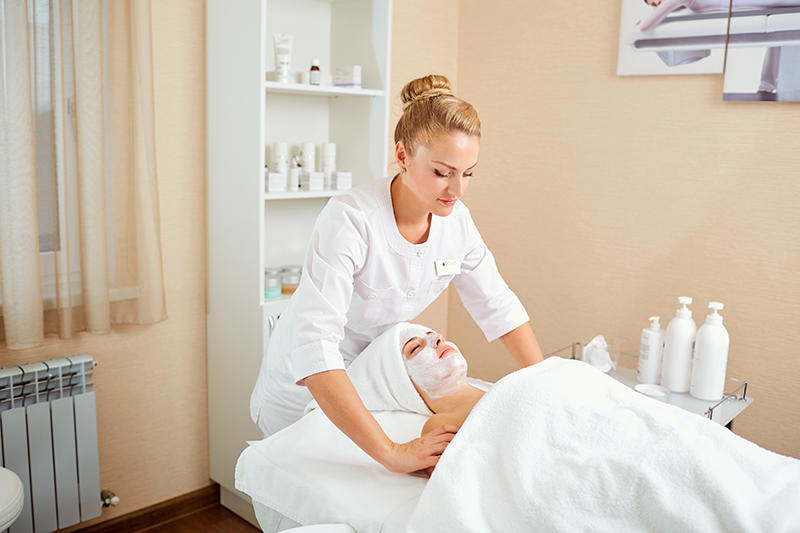Industry insights on skills needs
The Personal Services IRC’s 2019 Skills Forecast acknowledges the importance of technical skills in order to perform job tasks, however, a range of soft skills were highlighted as key priority skills for those involved in the Personal Services industry (including Beauty Services), including:
- Teamwork and communication
- Emotional intelligence
- Resilience, stress tolerance and flexibility
- Self-management
- Creativity.
In addition, the following generic skills were highlighted as key for the Personal Services industry (inclusive of Beauty Services):
- Customer service / Marketing
- Communication / Virtual collaboration/ Social intelligence
- Design mindset / Thinking critically / System thinking / Solving problems
- Learning agility / Information literacy / Intellectual autonomy and self-management
- Language, Literacy and Numeracy (LLN).
The job vacancy information incorporates both the Hairdressing and Beauty Services industries as more specific industry information is unavailable. The top beauty related occupations in demand are Hairdresser, Beauty Therapist, and Make-Up Artist, with the top employers listed as Justcuts Incorporated and Apprenticeship Central.
As revealed in a National Skills Commission report, employment has rebounded strongly against the backdrop of declining COVID-19 cases and easing restrictions, with Beauty Therapists being one of the top ten rebounding occupations. Predictions made by the Australian Government Job Outlook suggests moderate future growth for Beauty Therapist jobs, a view also held in the National Skills Commission’s Skills Priority List: June 2021 which lists Beauty Therapists in ‘occupations not in national shortage, with moderate future demand’.
According to SkillsIQ’s report Beauty Services, Skin Therapy and Cosmetic Tattooing: Case for Endorsement, technologies used in beauty treatments have advanced rapidly. SkillsIQ is undertaking a comprehensive update of the Beauty Training Package Products to increase the level of nationally recognised training in the skin therapy, cosmetic tattooing and spa industries. Attention has been focused on skills and knowledge across areas including machinery, advancement in chemical treatments, Intense Pulsed Light (IPL), laser skin treatment and underpinning knowledge of skin and wound healing.
The Personal Services IRC’s 2019 Skills Forecast reports that in the beauty subsector, increased demand for beauty services such as spa treatments, massages, relaxation and other beauty treatments will help drive this growth. Demand for these types of services is also being driven by increasing health consciousness among consumers, with individuals seeking out products and services related to enhancing their image. Also supporting this growth is the adoption of specialised equipment and technology, including those used for facial peels, laser hair removal, skin rejuvenation and cosmetic tattooing. These findings are largely reflected in a South Australian Training and Skills Commission (TASC) report which highlights growth in the industry is being driven by increased community image consciousness; salons diversifying into beauty, nails, make-up and massage services; and the introduction of visual enhancement treatments such as Pulse Light, facial peels, laser hair removal, skin rejuvenation and cosmetic tattooing.
The industry however, is not without challenges, with this aforementioned TASC report also highlighting the following concerns: competition from home hair and beauty products, especially through discount pharmacies, supermarkets and the internet; emergence of personal hair and beauty imagery on Instagram and DIY through online videos; decreasing size of the average salon which creates apprenticeship placement and skill development challenges; and the rise of low cost high volume nail, massage and basic beauty service businesses which operate with very few staff trained through the accredited VET system.
The introduction of new and specialised equipment and technology in the Beauty Services industry is changing the market in which many businesses operate. The Personal Services IRC’s 2019 Skills Forecast also discusses the de-regulation and lack of appropriate regulation within the industry, highlighting the need for licencing to be reintroduced, especially for beauty treatment services like intense pulsed light (IPL), laser equipment and cosmetic tattooing.
Attraction and retention of workers continues to be of concern across the Personal Services industry, as outlined in the Personal Services IRC’s Skills Forecast, with difficulty in attracting and retaining highly skilled and qualified staff largely attributed to views held by influencers of young people, including the industry not being valued as a feasible career pathway.
